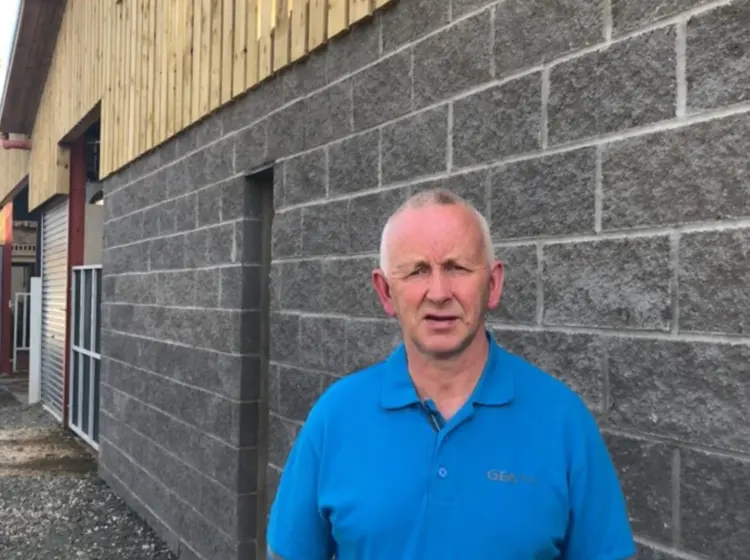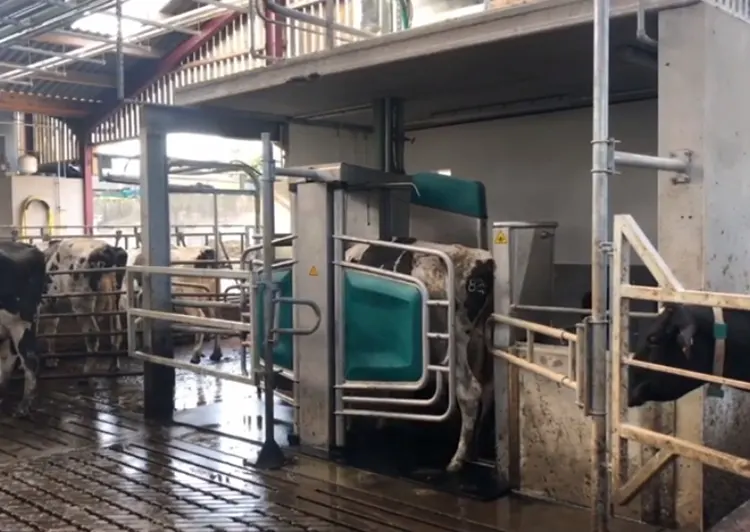Robotic milking solving labour problems for Carnhill Holsteins in Co Antrim
Sourcing relief milkers on an ongoing basis was once a “big problem” for Cahal Casey and his son Conor of Carnhill Holsteins near Cloughmills, north Antrim – but not anymore thanks to GEA robotic milking systems from McKnight Dairy Services.

Robotic milking solving labour problems for Carnhill Holsteins in Co Antrim

Sourcing relief milkers on an ongoing basis was once a “big problem” for Cahal Casey and his son Conor of Carnhill Holsteins near Cloughmills, north Antrim - but not anymore thanks to GEA robotic milking systems from McKnight Dairy Services.

That’s not to mention the time-saving benefits to the family farm team of being able to now milk their cows “without the regimental timetable of milking in a parlour”, says Cahal.
The Caseys have been milking on the family farm for many generations and have a herd of 170 cows and followers.
They are currently milking with three robots and aim to consistently produce 2 million litres of milk per year with their fully-robotic milking herd.
The farm objectives are:
- To maximise overall farm profit
- To have a labour-efficient working environment
- To be able to spend more time with family
“We started milking three times a day a number of years ago, which proved very beneficial for the cows’ yields; but sourcing on-going relief milkers was proving difficult,” according to Cahal.
In early 2018, the Casey family made the decision to introduce robotic milking and GEA Monobox (DairyRobot R9500) systems proved the perfect choice.
“We liked the pit area behind the cow. It gives great visibility and access to the cow - the fast attachment and everything happening in-liner,” Cahal commented.
McKnight Dairy Services installed the GEA Monobox robots in autumn 2018 and started milking in early October of that year.
“McKnight Dairy Services done a first-class professional job. There was no challenge that James, David and the boys couldn’t solve,” said Cahal.
“The start was fairly stress free and most cows took to the system fairly quickly but the extra time we spent at the start up was definitely a big help in the long term.
“What with having already used the GEA management system the transition to the robot was an easy adjustment.”
And the benefits of going robotic with the DairyRobot were soon very apparent.
“We have noticed an improvement in legs and lameness since starting robotic milking.”
“Cell counts always ran around 150 and were over the last few years. We are down around 90; it has increased slightly recently as cows are due for drying off.
“The quarter conductivity is great; it allows us to get in early and treat with udder mint. The Monobox also allows me to separate per quarter giving us more control.
“In the last couple of weeks, when I started drying off cows, I noticed a huge improvement in teat condition. Cows’ temperament has changed; they are quicker to work with also.”
Top benefits of robotic milking for Carnhill Holsteins
- Improved cow hoof condition
- Improved cow temperament
- Flexible working times/less milking workload
